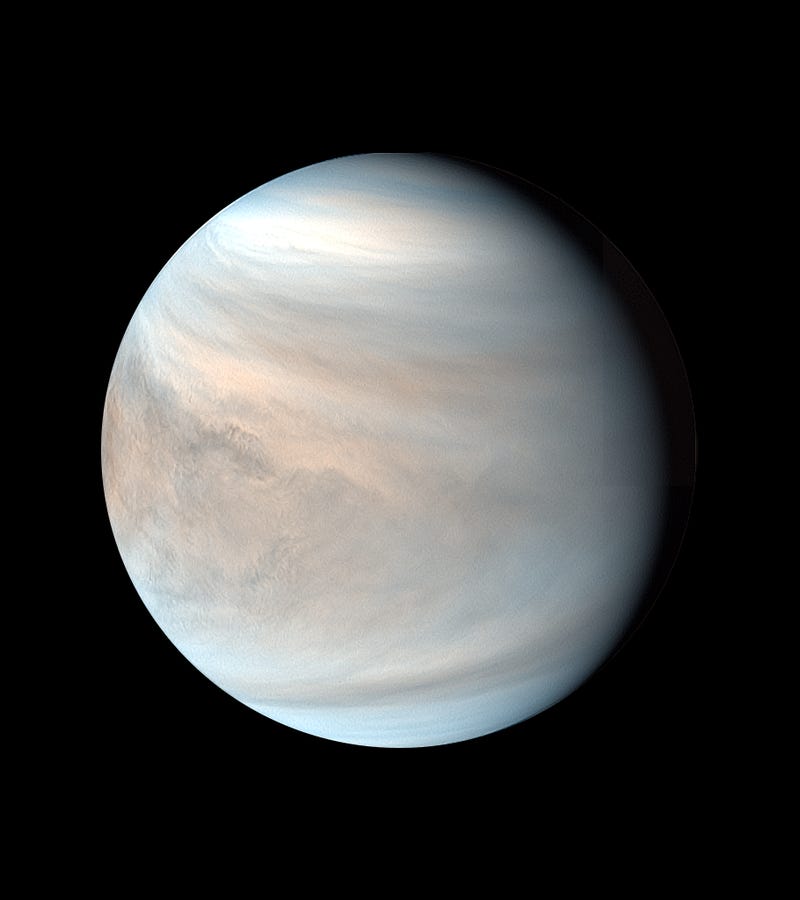
Life in Venus Clouds Would Break Everything We Know About the Planet's Chemistry
The strange lack of sulfur dioxide in Venus' clouds doesn't appear to be the doing of aliens.
There's something weird going on in the clouds of Venus.
Scientists have known this for decades and have long been interested in studying the planet's atmosphere. Whereas the surface of Venus is a desolate, uninhabitable hellscape that's hot enough to melt lead, the temperature in the cloud layer is much milder. In those clouds, planetary scientists have spotted a range of unusual chemical signatures.
Take sulfur dioxide. Observations from Earth and from spacecraft sent to Venus have shown the compound is spread throughout the planet's atmosphere. But curiously, it exists in much higher abundance closer to the surface. In the cloud layer, the abundance of sulfur dioxide is drastically reduced.
Now here's where the "aliens" part comes in — but don't jump to any conclusions.
Scientists have reasoned that perhaps, if life does exist on Venus, it utilizes sulfur as a way to get energy. "Aliens" in this case wouldn't be scary, glowing, green folk with huge heads, but microbes. On Earth, oxygen is a way for living things to make energy. But theoretically, the organisms on Venus would be able to sustain themselves, freely floating among the clouds, by gobbling down sulfur compounds and discarding other chemical compounds as waste. In papers written in 2004 and 2006, some scientists even suggested several metabolic pathways the tiny Venusians could use to do this.
A new study, published in the journal Nature Communications on June 14, takes these metabolic pathways and puts them to the test.
In a nutshell, the team posed a simple question: Was life in the clouds of Venus responsible for the weird sulfur dioxide signal?
"Life is pretty good at weird chemistry, so we've been studying whether there's a way to make life a potential explanation for what we see," noted Paul Rimmer, a planetary scientist at Cambridge University and author on the paper, in a statement on Tuesday.
To answer it, they took previous data about the composition of Venus' atmosphere and ran a computer model examining the three sulfur-based metabolic pathways to see if any of them accounted for the weird depletion of sulfur dioxide in the clouds. The modelling suggested they could. However, for these chemical reactions to be taking place, and to be caused by life, there would be a ton of waste products that we should also see in the Venusian atmosphere. We don't.
"If life was responsible for the [sulfur dioxide] levels we see on Venus, it would also break everything we know about Venus' atmospheric chemistry," said Sean Jordan, an astronomer at Cambridge, who led the paper.
Not dead yet
Of course, the researchers also state that this doesn't mean Venus is a dead planet. There could very well be microbial life there that doesn't affect the atmosphere in a way that we can detect. There may be other ways sulfur dioxide is removed by biological mechanisms, too. We simply don't know enough yet.
However, there's a growing body of evidence that even Venus' clouds are too harsh for life.
Almost a year ago, researchers from Queen's University Belfast came to similar conclusions. Based on their analysis, life as we know it wouldn't stand a chance in the clouds of Venus — it's simply too dry up there for even the most extreme microbes to make a living.
Though the "life in the clouds" hypothesis seems to have taken a few hits recently, the cloud layers of Venus continue to intrigue scientists. In 2020, a controversial paper purportedly found a signal for phosphine, a gas that's often associated with life on Earth, in the cloud layer. There have been several disagreements about the nature of this signal, but the work certainly resurrected discussion about visiting Venus and probing its interior.
In fact, three missions are scheduled to head to Venus in the next decade, with a headline act from NASA known as Davinci+ hoping to plough through the atmosphere, taking measurements of gases all the way down to the surface. Those measurements will surely up our understanding of the cloud layer and, maybe, reveal things we could have barely dreamed of when running computer models of life down here on Earth.
Or, maybe, they won't — but we'll be a lot closer to understanding what's going on in the clouds of Venus once we've visited them again.
"There's lots of strange chemistry to follow up on," Jordan notes.
